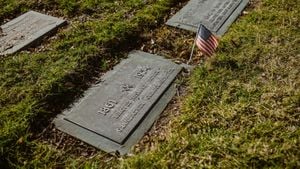A tragic incident has unfolded in Bareilly, Uttar Pradesh, where three individuals lost their lives after their taxi, guided by Google Maps, plunged off an incomplete bridge. The deceased, all hailing from Gurugram, were traveling to Bareilly when they encountered the unfinished infrastructure, which had no warning signs or barricades to prevent such accidents. This unfortunate event highlights the potentially deadly consequences of relying on navigation apps without considering real-world conditions.
The victims' taxi met its demise on the morning of October 2, when locals discovered the vehicle submerged in the Ramganga River. The police were alerted, leading to the recovery of the bodies later the same day. Initial investigations revealed the taxi had veered off the road due to the lack of proper warning about the bridge’s incomplete status. Eyewitnesses noted the absence of any barriers or signs, creating dangerous circumstances for unwitting travelers.
According to local reports, the deceased individuals have been identified as brothers King Nagar and Amar Nagar, aged 26 and 25 respectively, and their friend Hitesh Singh, 28. All three were reported to be enjoying their trip and had not anticipated the disastrous outcome. Their families have expressed outrage over the local government's failure to maintain adequate safety measures at the site. Villagers who witnessed the aftermath expressed shock and sadness for the victims, who were seemingly unaware of the imminent danger.
Villagers discovered the car at around 7:30 on the morning following the accident. They commented on the negligence of local authorities, underscoring their frustrations about the lack of proper maintenance and oversight of the bridge, which had been under construction for several months. Survivors of such accidents often have stories to share, but sadly, there are no such tales this time, as the men lost their lives abruptly.
Families of the victims shared their grief, expressing disbelief at the turn of events. The brothers were close-knit, and their friendship with Hitesh went back years. They had traveled from Gurugram hoping to spend some quality time together, but those plans were brutally cut short. Each family is now left grappling with the harrowing void created by this sudden tragedy.
The incident has ignited discussions about the reliability of mapping and navigation apps, particularly when they lead drivers to hazardous locations. Experts warn users to remain vigilant about their surroundings and always double-check local conditions, particularly when using technology sourced directions. Navigational assistance apps like Google Maps are excellent tools, but they do not replace local knowledge or common sense.
This specific case has caught the attention of authorities, and local police have started investigating the underlying issues contributing to the bridge's incomplete status and the associated risks. They aim to identify if there were any prior warnings or complaints lodged about the site. Local government officials have indicated plans to expedite investigations to address community safety concerns.
While more details emerge from the investigation, the pressing question remains—what measures will be implemented to prevent such incidents from happening again? Families of victims often call for road safety reforms, improved signage, and consistent infrastructure updates. Unfortunately, these accidents often serve as grim reminders of the work yet to be done to safeguard public safety.
Neighboring villages and communities are uniting to advocate for more stringent regulations and improved communication about road safety. They’ve launched campaigns to increase awareness of the dangers associated with neglected road work and inadequate infrastructure. Their hope is for enhanced governmental accountability and more stringent safety measures to be enacted.
Meanwhile, as the grieving families prepare to lay their loved ones to rest, it is evident changes must occur to prevent future tragedies. The familiarity with technology should not overshadow basic safety protocols at the hands of local authorities. The events of October 2 stand as a harrowing reminder of the intersections between innovation and public safety.
Better safety regulations, reflective of community needs and real-life scenarios, are imperative to restoring trust between local citizens and authorities. This incident might urge local governments to take swift action—prioritizing safety, so future generations can pursue journeys without facing such devastating risks.



